Justin Robinson's Blog, page 20
June 6, 2014
Liner Notes: Get Blank
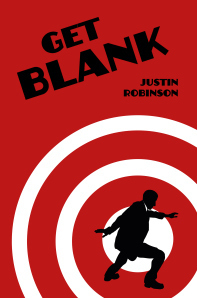 I was given a piece of advice by someone whose words, at least on the publishing industry, I treat as gospel: “If you want a career as a writer, you have to do a series.” This was exactly the opposite of what I thought I should do, and what I had been doing. I assumed that if you did a series, you were confining yourself to a smaller and smaller pool of readers. No one would buy the sequels that didn’t buy the first, I reasoned, and you’re going to lose readers with every book as people burn out. This person told me that every time I wrote a standalone, I was starting from scratch with marketing. That’s not to say I didn’t want to do a series. Like every writer, I have lots and lots of ideas that never make it to the page. I’ll happily fill in backstories on even the most minor characters, and long to elevate them from cameo, to supporting player, to eventual lead. I just forbade myself from writing any sequels until I sold the original novel in question. I didn’t want to spend my time expanding on a book I hadn’t even sold yet. So I waited.
I was given a piece of advice by someone whose words, at least on the publishing industry, I treat as gospel: “If you want a career as a writer, you have to do a series.” This was exactly the opposite of what I thought I should do, and what I had been doing. I assumed that if you did a series, you were confining yourself to a smaller and smaller pool of readers. No one would buy the sequels that didn’t buy the first, I reasoned, and you’re going to lose readers with every book as people burn out. This person told me that every time I wrote a standalone, I was starting from scratch with marketing. That’s not to say I didn’t want to do a series. Like every writer, I have lots and lots of ideas that never make it to the page. I’ll happily fill in backstories on even the most minor characters, and long to elevate them from cameo, to supporting player, to eventual lead. I just forbade myself from writing any sequels until I sold the original novel in question. I didn’t want to spend my time expanding on a book I hadn’t even sold yet. So I waited.
Mr Blank was the obvious place to start writing sequels. I published it early, with a great outfit, and I really enjoyed writing that one. It came easier than most, simply because I was writing as close to my natural internal monologue as I could. It’s also a damn fun world to play around with, dark enough to keep from becoming Disneyland, but with that all-important sense of fun. Despite the ending, a sequel was a foregone conclusion, at least to me. This went through several titles before I settled on the Elmore Leonard-esque Get Blank.
I should note here that these Liner Notes, though always a little obscure, should not be attempted without having read at least Mr Blank, and will probably make way more sense if you’ve also read Get Blank. Lucky for you, both are available from my publisher.
I ended Mr Blank (SPOILERS) with our hero picking one name and retiring. So my first challenge was getting him out of retirement. In the earliest drafts, this was going to be the fault of Vassily the Whale and his henchmen kidnapping Blank. I had a vague idea that Vassily would want a MacGuffin, which would probably be Polybius. I ended up hanging onto the trunk scene, and extracting the whole Polybius plotline for the third book (oh yeah, as of this writing, I’ve done two drafts of a third book), but the catalyst for the adventure changed. What would get our hero out of retirement? Mina. Had to be Mina.
I knew I wanted to keep them apart for most of the book, because while I wanted to depict a happy couple, these can be irritating to read. Unfortunately, she ended up getting relegated to a damsel in distress status (although I tried to hang onto her attitude through it), which is sad considering how much fun I have writing her. I promised myself she’ll get a lot more page time in the later books, and thus far I’ve kept that promise. I also wanted to make sure that Mina’s innocence was never doubted by Blank. It looks bad, but he never thinks, “Hey, what if she’s not what I think she is?” He trusts her implicitly (which continues the subversion of the femme fatale trope, which was the genesis of Mina’s character to begin with).
I also wanted to mine the first book for both characters and conflict, but not too heavily. Give the sense that this is the same world, but not make it too small. I think I failed here, at least partly, as the most important characters in this one are all fairly important characters in the last. It did give me a chance to expand on personalities, and writing Victor Charlie especially was way too much fun for one person to have. I usually end up having a favorite supporting character to write, and VC, along with the deranged megastar Rodrick Rand, holds the top spot for me.
Unlike previous Liner Notes, I don’t have to explain where the whole universe came from, so I wanted to get into some specifics. Trivia about the source of some characters, and in the process, out myself as a giant nerd. So here goes.
Vassily the Whale, Arkady Lazarev, and Tatiana Renko were all NPCs in my long-running Vampire: The Masquerade game. Arkady was a Malkavian gangster, Vassily was his ghoul, and Tatiana was a ghoul and later rival (his other ghoul was Boris the Cossack, and I used a picture of Alan Moore for his character). And yes, this is my way of telling you I had a long-running Vampire: The Masquerade game.
Heather Marie Tooms is based on a character I played in a friend’s Hunters game. His name was Chuck Finley (reflecting his pitch as a cultier Michael Westen), and unlike Heather, his fame was confined to a single pilot. His signature line, “Welcome to the Palisades, bro,” is from Party Down, and you should totally watch that show because it’s amazing. I ended up turning him into an unsuccessful, brainwashed version of Sarah Michelle Gellar, because I wanted to play with a real femme fatale, especially one who was clearly completely fucking insane. She’s beautiful, but our hero is completely uninterested because a) he’s with an incredible woman and b) he’s not into crazy. It was a fun dynamic to explore. While I have no specific plans to bring Heather back, I wouldn’t rule it out.
As for the Rosicrusophists, they are in no way based on a great and true religion who are prominent in Hollywood. I don’t know where you would get that idea. You must be Misguided.
The pro shop and cafe at the gold course are entirely real. The waitresses there do your standard diner patter, but it’s all in Spanish, so instead of “hon,” you’re “cariño.”
The Lizard People in the book were originally just C.H.U.D.s. Yeah, I’m from the ‘80s, and that’s a sentence that makes sense. A reader of mine was like, “Oh, I thought this was going to be about the Lizard Kingdom under downtown.” I was confused, and this was one of those situations where everyone assumes I had heard of something insane, because it’s me. Nope. So yeah, there’s an Underground Kingdom of the Lizard People under the library. There was even an article in the January 29, 1934 edition of the Los Angeles Times all about it. I have a plan to go back to this group at some point, probably inspired by all those Conan comics I read as a kid.
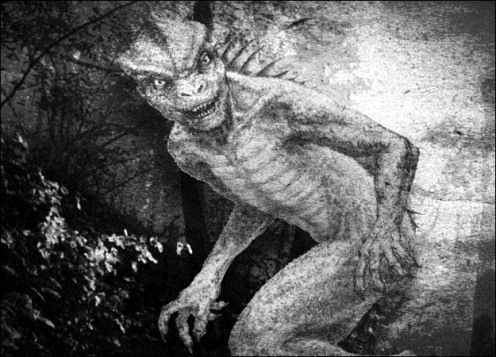
“Wanna check out my screenplay?”
The standoff in the church came from an errant thought, “Hey, what if Blank runs into someone else’s noir plot that’s happening at the same time?” I wouldn’t be surprised if I go back to that particular well, as my conception of the Information Underground is that there is a constant undercurrent of dames, betrayals, Maltese Falcons, murders, and the occasional misplaced grilled cheese constantly swirling around in a paranoia tornado (a paranado?).
And that Dr. Zhivago thing? Happened to me. I mean, it was a good movie and all, but no cannibalism. Zip. Zilch.
I might have forgotten some stuff, as most of my Blank thinking is wrapped up in stuff that’s not published yet. If you have any questions, let me have ‘em!
Filed under: Level Up, Moment of Excellence, Puffery Tagged: books, Get Blank, I'm a real author!, Liner notes, Mr. Blank, series

May 30, 2014
Yakmala: After Earth

Aw, don’t be sad, Smiths!
The L.A. Weekly, my local free paper, ran a cover story in its most recent issue about how the new internet journalism destroyed Tom Cruise, our last remaining movie star. While reading, all I could think is, “What about Will Smith?” He has as close to a 100% approval rating as any celebrity will ever get. I know some people who hate Tom Cruise with a passion usually reserved for pedophiles and guys on the wrong baseball team, but I don’t know anyone that actually dislikes the former Fresh Prince. Maybe he felt this love and got too cocky? Whatever the cause, he made After Earth and we have to suffer.
Tagline: Danger is real. Fear is a choice.
More Accurate Tagline: Charisma is real. Nepotism is a choice.
Guilty Party: What with M. Night Shyamalan being a favorite punching bag of the internet (for good reason), it would seem he’d be responsible, but he was just a gun for hire on this one. No, this was due to the arrogance of our last true movie star, Will Smith. While most rich daddies would be happy getting their entitled spawn a BMW or small island, that was apparently not jiggy enough for Mr. Smith. No, he wanted to give his son a career. Unfortunately, Jaden Smith lacks pretty much everything that made his father a star.
Synopsis: When a film opens with a bunch of confusing and redundant voiceover, the fault usually lies with some dumbshit executive who demanded an explanation up front for the various mysterious elements of a story. This is because executives have the mental and emotional maturity of preschoolers. In this case, you’re dealing with the biggest star on the planet, and he could give less than a fuck about what some suit thinks. So the pretentious world-building, the front-loaded hand-holding of revelations that will come in due time? All Smith.
A thousand years ago, humanity, led by the heroic Ranger Corps, abandoned a polluted and “destroyed” earth in favor for a new planet. Then some aliens attacked, but we don’t see those aliens, we see their shock troops, a whole other kind of alien called an Ursa. The Ursa is basically an indifferently designed CG mass of limbs that can sense human fear, but one guy, Prime Commander Cypher Raige (Will Smith, and yes, that’s seriously his name) figured out how not to be scared. Now invisible to the Ursa, Prime Commander Cypher Raige teaches this technique, called ghosting, to the other Rangers.
His son, Kitai Raige (Jaden Smith), wants to be a Ranger. He’s great in the classroom but terrible in the field. That’s… that’s a perfect metaphor for the making of this movie. Shame neither Smith noticed. Prime Commander Cypher Raige returns home, and it’s unclear if he’s ever met his family. Will Smith seems to have interpreted “can resist fear to become invisible” as “I am a soulless robot with short term memory problems.” Prime Commander Cypher Raige plans to retire after one last mission, because he’s never seen movies and doesn’t know he’s just doomed himself.
Predictably, this last mission (which was supposed to be a quick trip) ends in disaster. The ship carrying Prime Commander Cypher Raige, and his son, going along because Prime Commander Cypher Raige’s wife, Mrs. Prime Commander Cypher Raige, thinks maybe father and son could exchange some stilted conversation. The transport ship is also carrying a captured Ursa, because reasons. Anyway, the ship crashes on earth, which has now turned into a low-oxygen deathworld populated by prehistoric monsters who like to eat people. Bad luck, right?
Because Smith was binging Lost before writing the story, the ship splits in half. The beacon that will signal an instantaneous rescue is in the tail. Prime Commander Cypher Raige’s legs are broken (and one of his arteries is pumping blood all over the place, so apparently in addition to not feeling fear, he can also function without blood) so he can’t go. It’s up to Kitai Raige to overcome the problem of being bad in the field!
Kitai journeys across the hostile landscape, confronting various animals and flashbacks on route to saving his dad. Oh yeah, Kitai is haunted that, at the age of seven he was not able to save his elder sister — who was also a trained Ranger — from an Ursa. So, hooray for sexism I guess? Anyway, Kitai makes it to the ship, uses the beacon, but not before fighting the Ursa. He manages to ghost at the last moment, and because of this, is able to kill the beast.
He signals the rescue, and Prime Commander Cypher Raige is still alive, despite having a broken artery in his leg for several days. He should have been as empty as a juice box in the Bluth household. In the last, misguided moment in the script, Prime Commander Cypher Raige asks to be stood up. Then, a man who has spent the entire film as an emotionally-closed off robot, chooses to salute his son. His son hugs him. Yeah, that’s the exact opposite of good writing there.
Life-Changing Subtext: Only through the absolute destruction of all emotion can we be safe.
Defining Quote: Prime Commander Cypher Raige: “Fear is not real. The only place that fear can exist is in our thoughts of the future. It is a product of our imagination, causing us to fear things that do not at present and may not ever exist. That is near insanity, Kitai. Do not misunderstand me, danger is very real, but fear is a choice.” I actually like this quote. It makes good sense and belongs in a better movie, specifically one that does not include a character named Prime Commander Cypher Raige.
Standout Performance: Will Smith is basically walking, talking charisma. You can’t help but want to be the guy’s friend. In this movie, he takes all that charm and locks it away in a box. He’s clearly trying not to overshadow his son, but the problem is, what Jaden lacks in charisma, he also lacks in acting ability.
What’s Wrong: In the beginning, we’re told that earth was “destroyed” and shown a montage of pollution and war, because we’re idiots and can’t be trusted to fill in the blanks. Yet when we get to earth, it’s a verdant paradise that looks like it should be knee-deep in Ewoks. Humanity left a thousand years ago, so it had some time to recover. But what about the creatures? Prime Commander Cypher Raige specifically says that everything on the planet has evolved to kill humans. Seriously? When? If it was before humanity left, there is no single trait that would insure a species get ruthlessly hunted to extinction than if it started preying on humans. If it was after humanity left, why would evolution select for traits to hunt prey that was no longer there? I’m fine with earth becoming a savage sci-fi deathworld, but come up with a reason that’s not stupid.
I’ve harped on the performances of both leads who are the only humans in the film for the vast majority of its running time, but one element can’t be glossed over. Both Will and Jaden Smith do an accent, but can’t seem to decide on what it should be. They spend most scenes fruitlessly cycling through terrible British, Caribbean, South African, and something that sounds almost like a hearing impaired seal being pleasured to completion.

Don’t judge.
Flash of Competence: The most infuriating aspect of After Earth is how close it comes to being a good movie. There really is a lot to like about it. The far future production design is wonderful, the idea of an untested boy braving a hostile environment, a father and a son connecting emotionally after years of distance, a science fiction story starring black heroes, and the simple fact that neither Prime Commander Cypher Raige nor his son ever reflect on the dead earth or humanity’s reasons for leaving, all belong in a much better film. Also, M. Night does an excellent job with the nuts and bolts of shooting, making me think he missed his calling as a cinematographer, or at the very least, not a writer.
Best Scenes: The first hazard Kitai faces is a baboon. It appears on Prime Commander Cypher Raige’s sensors, and he warns his son of an incoming lifeform. It’s the only thing on the sensors so… does that mean there’s nothing else in the woods? Nothing else dangerous? Anyway, Kitai ignores dad’s orders and throws a rock, and suddenly a ton more monkeys appear, showing up as red triangles on Prime Commander Cypher Raige’s readout. Where were they? What happened? Did they suddenly warp in? Were they cloaked? Holy shit can monkeys ghost?
Later, Kitai is taken into a giant eagle’s nest to be eaten by its chicks. That’s when a ton of ligers show up to eat pretty much everything. Kitai does some future karate and defeats the ligers, but all the chicks end up dying. The eagle then follows Kitai, presumably to eat him. Yet overnight, when the planet freezes over because reasons, the eagle decides to save Kitai’s life by sleeping on him. Incidentally, this kills the fucking eagle. It’s like Will Smith wrote himself into a corner, and just threw up his arms and went, “Fuck it, eagle sits on him.”
Transcendent Moment: In the final fight between Kitai and the Ursa, the monster is doing very well, at one point slamming the boy into some rocks (hard enough to kill him, but maybe CG creatures don’t have the proper muscle mass). Kitai, remembering some of his dad’s words, suddenly learns to ghost, and the creature just flat out can’t see him. That’s when I wondered how the hell Ursas get around normally. If they can’t perceive something that’s not afraid, how do they walk? Is the ground scared of them? How about the trees? Why are they not bumping into each other? Are they constantly forced to play a game of Marco Polo with one another, shouting “BOO!” at thin air?
Also, Kitai is forced to use his dad’s “Cutlass,” which is a fancy double-edged future sword. Quick question: did humans forget about guns? I’m thinking that the Ursa, whose only ranged weapon is acid spit, might not do so well when confronted with a high-powered sniper rifle. Yes, I know Ursas can become invisible, but you’re telling me these people can’t make sensors for that? You know, like the one Prime Commander Cypher Raige has that tracks the Ursa’s movements the whole way?
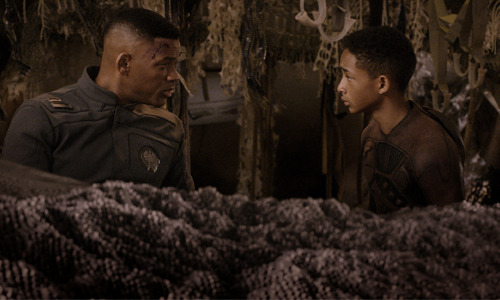
“Guns are for bitches, Kitai.”
After Earth was intended to be a sprawling multi-platform array of movies, novels, comics, and video games. It failed due to one simple rule: you can buy your son a movie, but you can’t buy him stardom.
Filed under: Projected Pixels and Emulsion, Yakmala! Tagged: After Earth, daddy buy me a career, ghosting, Jaden Smith, nepotism, ursa, Will Smith, Yakmala!

May 28, 2014
Win GET BLANK!
If you said yes to any of that, you want the book. And if you said no, you're a sad person and we probably shouldn't talk further.
So how do you win a free copy of the book?
Well, there's a Goodreads Giveaway happening right now! Head over there and enter.
There's also a scavenger hunt organized by my amazing publisher, Candlemark & Gleam. Check here for more information:
http://www.candlemarkandgleam.com/201...
Or you can have fun on Twitter! Follow @FanboyComix and wait for them to tweet this:
Enter to win a #GetBlank prize from @JustinSRobinson, @CandlemarkGleam, & FBC! #noirrulesgiveaway RT to enter!
Then retweet it! That's all!
How cool is that?
May 23, 2014
Lifetime Theater: Death Clique
The Lifetime brand has never been known for subtlety. While this statement reeks of film geek snobbery, it’s not intended as an insult. I firmly believe that this lack of nuance is built right into the business model. While there is a certain subset of people who will sit down and watch a Lifetime movie from beginning to end — and this ranges from folks hunting for an ironic laugh to fans of Law & Order presently between marathons — I believe they’re intended to be consumed primarily as background noise. A Lifetime movie is something to have on while you do something else, maybe housework, a little crocheting, or cleaning a large collection of antique dildos. I’m not here to judge. This is why everything is so obvious, why characters generally say exactly what’s on their minds, and why the fundamental lessons never aim to challenge the imagined values of Middle America. This week’s entry, 2014’s Death Clique is all those things and so much more.
Based on the true story of Skylar Neese — and anyone who wants to lose faith in humanity should check that case out — Death Clique opens with a drunk mom. I know drunk moms, and this lady is seriously, next-level, TV, Lifetime-movie drunk. She’s sucking on an empty wine bottle like she thinks it’s attached to Joe Manganiello. Daughter Ashley, whose blonde locks and resemblance to a more wholesome Evan Rachel Wood would imply her to be the heroine, wanders in. Alert viewers, however, will note her leopard print leggings, which imply that she’s either a) trouble, b) the guitarist from Whitesnake, or c) both. Ashley is instantly a bitch to her mother (whose name is Tina — although I didn’t find that out until the third act), but I can kind of see where she’s coming from here.
At school, we meet two other girls. There’s goody-two-shoes Sara, and bad girl Jade (yep, Jade), who have been best friends since the sixth grade. Sara has the perfect nuclear family, while Jade is being indifferently raised by her absentee dad whose idea of parenting is telling her to find a place to crash while he moves in with someone named Mindy. Ashley inserts herself into the group, and though she makes a cursory effort to fit in, she pretty much immediately focuses on Jade, staring at the girl like she’s a hot pocket. At first it’s just surface rudeness to Sara, but it soon develops into Ashley attempting to drive a wedge between the two friends.
Meanwhile, Sara’s dad got a job offer in Houston. Apparently it’s a giant promotion, but they would have to move. This plot thread is there to provoke conflict in the perfect family, as well as point out that the last time this happened, Sara ran away. It also serves to twist the knife of irony, as the main reason Sara doesn’t want to leave is out of loyalty to Jade. As Ashley isolates her from Jade, this isolates Sara from her parent. Granted, it’s sort of her fault in this case, but she’s in high school. She’s supposed to be selfish.
Ashley shows her true colors pretty quick. While the stuff she does to separate Sara and Jade is wrong, it’s not necessarily out of the bounds of normal teenage stuff. By which I mean borderline psychopathic, but isn’t that what teenagers are? Well, normal until the Spanish teacher calls out Jade in class, and the two brand new BFFs head over to slash his tires. Or when her drunk mom decides to take umbrage with Ashley’s outfit, thus showing the best ways to rearrange the Titanic’s deck chairs, and gets an open-handed bitchslap to the mouth for her troubles. Ashley keeps up her campaign of terror between the friends, but at this point, it’s not quite into Single White Female territory. Not until Sara actually confronts Jade about what’s been happening, and Ashley overhears. Shit’s about to get real.
Later that night, when she’s in bed with Jade, Ashley talks about how Sara drags them down and someone should put her out of her misery. Jade wants to ignore her, but it’s pretty obvious that Ashley wants to do more. If the girl had a mustache, she’d be twirling it and there’d be a big thought bubble over her head with Sara tied to some train tracks. Jade, still under the impression they’re just planning to play a prank on Sara, gets her to come out with them. “I trust you,” Sara says. They take Sara to an abandoned warehouse, and Ashley stabs her to death with a pocket knife while Jade freaks out.

Ashley acts a lot like Dexter did in the first season, showing zero remorse and being baffled whenever Jade does. She’s basically an Evan Rachel Wood-shaped robot. She‘s still pretty savvy though, knowing enough to implicate Jade, at first assuring her that they’re in it together, and later as the police close in, actually planting the bloody murder weapon in Jade’s house. Since she saved the knife and never washed it, it’s pretty obvious that this was her plan from the beginning.
The movie shifts over to Lana and Paul, Sara’s parents, as they deal with the slowly mounting horror of their daughter’s disappearance. Paul thinks Sara just ran away again, stopping short of calling his wife crazy. But this is Lifetime, remember, so this is about the steely determination of a woman out for justice. Jade (after lots of denials and outright lies) finally comes clean about what happened, but due to Ashley’s preparations, Jade’s the one who gets hit with the crime. Lana, after researching Sara’s Fakebook page (that’s what I’m calling the movie’s hilariously low-res version of Facebook), is convinced Ashley is behind it all. And she’s right. Eventually, she’s able to appeal to Tina the Drunk Mom’s sense of decency and set up a bizarre sting to get Ashley to confess, which she does in a moment of supervillainic hubris. This scene features multiple characters stepping out of the kitchen to catch Ashley in the confession. It’s kind of amazing.
The movie as a whole is pretty standard Lifetime fare — as I’ve begun to understand it through my frankly surprising journey. It’s a true-crime thing preying upon the adult fear of losing a child, modestly budgeted for the suburban set. Yet Death Clique is remarkable in its subtext, which veers toward the blatant even for this network. First, there is the focus on family: of the three girls, only good Sara has a mother and a father. Ashley is raised by a single mom whose crippling alcoholism (and a single line of dialogue) implies that she can’t hold a job (yet she lives in a lovely suburban castle with multiple bedrooms). Jade’s deadbeat dad is scarcely better, and it’s the saintly Lana and Paul who cared for her the most.
Yet most repellent is the depiction of Ashley as a predatory lesbian. Yeah, I didn’t mention that in the synopsis, because it had fuck all to do with the plot. Homosocial friendships can have gay undertones, but Death Clique wanted to make those into overtones. Jade and Ashley share a bed often, with Ashley cuddling up to her sleeping friend. Ashley gives Jade long, lingering, and smoldering fuck me eyes at the slightest provocation. The defining photo of the two girls, seen many times throughout the film, has Ashley planting a not at all platonic kiss on her friend’s cheek. She even tells Jade she loves her. And, lastly, after all the murder and framing have happened, there’s a throwaway scene where Ashley meets a new girl and sparks fly.
What did we learn this week? Well, we learned that a single-parent household will, at best, produce a girl who will stand idly by while her best friend is murdered, and at worst, will become a lesbian psychopath. If there’s even a difference. It’s strange to watch Lifetime, in an era in which 17 states have instituted marriage equality, wallowing in the kind of rank homophobia that should be deader than disco.
Filed under: Projected Pixels and Emulsion Tagged: angry lesbian, Death Clique, killing, Lifetime Theater, nuclear family, popularity

May 16, 2014
Now Fear This: Bad Milo!
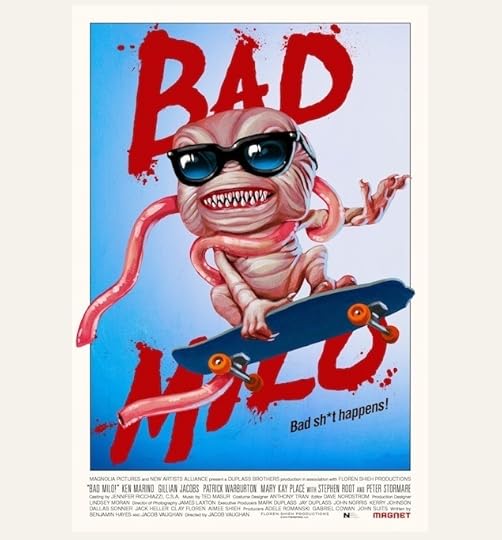
He doesn’t skateboard. That’s artistic license.
As it turns out, we humans are really obsessed with our junk. Most horror movies have a readily made Freudian interpretation about the importance or muddling of gender roles. The classic reading of slasher movies goes like this: virginal young woman with androgynous name gets hunted by faceless avatar of masculine power wielding one or more phallic symbols until she arms herself with a bigger, stronger phallus and claims the masculinity within herself. It works because western audiences are pretty uncomfortable with the blurring of gender lines, and women get disproportionately masculinized because that’s the lens we use to understand power. Think of the many “strong heroines” out there — most are women taking masculine power for their own and dealing with problems in a traditionally masculine way. Rare is the man who does the precise opposite, which is what makes the 2013 horror/comedy Bad Milo! such a pretty little snowflake.
Duncan (Ken Marino of The State and Veronica Mars), whose onomatopoeic name cruelly taunts what he can’t do in the bathroom, has a problem. The poor guy has serious bowel issues caused by the metric shit ton of stress in his life. I’d say no pun intended, but the movie uses so many ass puns, I just wanted to fit in. Anyway, the company Duncan works at is downsizing, and his boss puts him in charge of layoffs in addition to his current responsibilities. His father is absent, and his mother is with a much younger man whose favorite dinner conversation topic involves just how much he is wrecking that in the sack. Duncan’s wife meanwhile wants to have children, and everyone from Duncan’s mom to a seedy fertility doctor wants to figure out what the hold up is.
That bowel issue turns out to be a monster living up Duncan’s ass. I thought about easing into this revelation, but what the fuck. This is a movie about a killer ass monster. Periodically, the monster climbs out of Duncan’s butt and straight up murders a cause of stress in his life. Duncan’s deranged psychiatrist believes that the monster is a personified id, and that killing it would turn Duncan into a zombie. The only solution then, is to make friends with it. The first step is a name: Milo.

Step 2: Spooning.
Ridiculous, right? The weird part is that not only is the movie funny, it actually manages to be touching. It’s about a man making peace with the worst parts of his psyche, accepting it, and becoming a better man. Also, ass monsters. The cast deserves a big share of the credit here, and it’s just stuffed with ringers. Other than the always fantastic Marino, you have Community’s Gillian Jacobs as his wife Sarah, Peter Stormare of Fargo and probably your nightmares turning in a gleefully unhinged performance as Highsmith the shrink, vocal ace Toby Huss as Dr. Yeager the butt doctor, Kumail Nanjiani stealing every scene he’s in as Duncan’s “step dad,” Patrick Warburton adding a little sleaze to his go-to Puddy persona as Duncan’s boss, and the great Stephen Root as Duncan’s estranged father. Just as much praise should go to director and co-writer Jacob Vaughan and co-writer Benjamin Hayes, for finding real emotion amongst the butt stuff.
Bad Milo! is concerned with the question of masculinity from the very beginning. Duncan is consistently looked down upon as being less of a man because he’s meek and nice. His “stepfather” wants to be called “dad” and consistently, despite being the same age, invokes his privilege as the patriarch. He points out that Duncan grew up without a father figure, and is concerned about his perceived “girliness.” Duncan’s mother emasculates him by harping on Sarah’s non-pregnancy. At work it’s the same story, with the boss first saddling him with the stressful extra work of laying co-workers off and then laid off employees taking out their frustrations on him. They even transfer his office to (of course) a non-working bathroom. The film is playing in the common conception that a lack of traditional masculinity is tantamount to weakness, which then conflates “weakness” with femininity.
Small wonder then, that a man so relentlessly feminized should give birth. One of the earliest shots of the movie is Duncan and Sarah at an ultrasound, but as the camera pulls out, it’s revealed that the expectation that this is Sarah getting a look at her unborn child is incorrect. The patient is Duncan, and the doctor is trying to figure out what’s wrong with the poor man’s bowels. It was always clear that the film’s sympathies lie with Duncan — the events going on around him are portrayed as unjust and often cruel — yet in the moment Milo comes from his ass, it explicitly equates femininity with power. Duncan gives birth, which is pretty much the most girly thing you can do, and he is instantly powerful. Granted, it’s not a power he wants. He’s a nice guy, and would rather people aren’t torn apart and partially devoured, even if they are assholes. Yet those who wrong Duncan, who demean him, who step on him, who frustrate him, feel the wrath of his ersatz birth canal.
Meeting Milo’s aggressiveness with violence would be the masculine solution, and thus is the wrong one. No, to curb Milo’s rampages, Duncan has to befriend him. He has to accept the part of his personality he doesn’t like, and accept it back inside. The final part of this — spoiler alert — reverses the genders of the spouses as Sarah does her part to help stuff Milo back up Duncan’s ass. I mean, there’s some violence in there, much of it having to do with breaking down doors and sliding through pipes, because sometimes symbolism should be obvious. Milo isn’t truly placated until Duncan swaddles him up in some blankets and comforts him like a baby, truly embracing the ultimate feminine role of mother.
It’s a smart movie hiding inside a dumb one, asking big questions about what it means to be a man in the modern age. The answer it finds is a noble one, even if it involves murderous puppets coming out of your ass.
Filed under: Projected Pixels and Emulsion Tagged: ass demon, Bad Milo!, butt monster, Gillian Jacobs, horror comedy, Ken Marino, Now Fear This, Stephen Root

May 9, 2014
Girls, Guns, and G-Strings: Enemy Gold
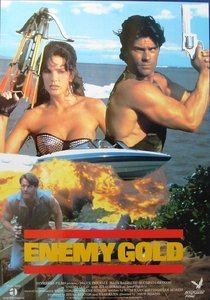
She never actually uses that crossbow.
Cast: Enemy Gold (1993) features some of the same performers as previous entries in the series, but they’re all playing new characters. It’s also the first one written and directed by Andy’s son (and frequent cameo haver) Drew Sidaris. So I’m choosing to interpret this installment as an alternate universe what-if, because if there’s one thing softcore porn needs, it’s convoluted metaphysical backstory.
Bruce Penhall, who has been with the series since Picasso Trigger, and has been playing agent and leather vest enthusiast Bruce Christian since Savage Beach, returns playing the very Bruce Christiany role of secret agent and leather vest enthusiast Chris Cannon. His partner, Mark Austin is played by Mark Barriere, who previously played Russian beefcake Gregor in Fit to Kill.
Suzi Simpson is the Donna/Taryn/Nicole of Becky Midnite, a frequently nude agent obsessed with showering. Although, to be fair, everyone in this movie is obsessed with showering.
Tai Collins plays Ava Noble, who is the Lucas role here of everybody’s boss.
The bad guys are Sidarisverse regulars Rodrigo Obregon, playing Santiago, the Bolivian drug dealer, and Julie Strain as… wait for it… JEWELL PANTHER. That is fucking right. Whatever scale there was to measure Sidaris names has just been irrevocably fucking shattered, because there’s someone named Jewell Fucking Panther in this thing.
Non-Actor Quotient: Strain, of course, has her background in Penthouse, while Suzi Simpson represents the Playboy side of that particular pillow fight. Mark Barriere has a Playboy video on his CV, and I’m not sure what to do with that. Tai Collins was most famous for, no shit, an affair with Senator Chuck Robb, and later appeared in Playboy, because men are gross. Lastly, playmate Kym Malin returns after a lengthy absence in the thankless role of Cowboy’s Hostess. I will not be mentioning her in the synopsis, so that should give you an idea of how important her part is.
IMDB Plot Keywords: gold, lingerie, lust, no panties, sexual attraction
IMDB User Lists Appearing On: DVD Collection, Movies I’ve Seen, Series – Lethal Ladies, Server, DVD collection (yes, it’s on two different lists called DVD Collection — one is capitalized, the other isn’t. I feel you need to know this.)
Synopsis: This begins as the most ambitious of the entire series, opening with a Civil War-era flashback, and then actually using camera angles that you wouldn’t see on any given episode of Facts of Life. Then about ten minutes in, everyone realized they had about a half hour of story they needed to stretch to feature-length. The worst part? They didn’t even pad it the way you’re supposed to with softcore porn! Oh, there are several gratuitous sex scenes, but they’re relatively short. You know, so we can get back to the good stuff.
The Civil War opening establishes that the Confederate guerrilla William Quantrill hijacked a Union shipment of gold and hid it somewhere in Texas. Then the movie forgets about this for what feels like several hours.
Becky Midnite gets off a plane and goes to see Chris Cannon and Mark Austin who are in the middle of an ‘80s weapon-loading montage. They’re about to go raid some drug dealers, and Becky joins up because she has fuck all else to do. They roll up on an encampment where two 50 year old dudes with frizzy mullets are doing some white guy karate with an audience of a pair of men who can only be described as boy band hillbillies. The good guys find the drugs, kill the boy band hillbillies, and arrest the old men (who the credits informed me are named Rip and Slash). A superior agent, the appropriately named Dickson, is mad because they didn’t have a warrant and they straight up murdered two guys. He’s not wrong here. But they say they’re loyal to Agent Noble.
It cuts over to DC, and we meet Agent Noble, right before shower time. We cut away before she does anything else, because who needs character? No, I’m seriously asking here. Agent Dickson goes to a strip club — Cowboy’s — where cranky drug dealer Santiago is upset about his men being killed and his shipment seized. They threaten each other a lot, really just establishing that they’re working together but not terribly happy about it. Then Santiago goes to take a shower with his dancers. Yep. That’s two showers already.
Agent Noble gets called into a meeting and informed that her entire team (which includes Becky, who just showed up) is suspended. The agent giving the news might be the worst actor I’ve ever seen. I wouldn’t be surprised if they were just making his mouth move with peanut butter and dubbing in dialogue recorded by a survivor of extreme brain trauma. Noble gives the news to Becky, Chris, and Mark, and they decide to go camping, and possibly have a Devil’s Threesome. Mark and Chris are psyched, not for the prospect of their dicks finally touching, but because they used to go out in the woods and search for Quantrill’s gold.
Jewell Panther arrives into the movie like a valkyrie from a Ratt video. She’s an assassin hired by Santiago to kill the good guys in retaliation for the raid. Rip and Slash (out of jail because, hey, no warrant!) want the chance to kill the heroes, but Panther’s a pro. Dickson is also there, and Santiago threatens to take his gun away and shove it up his ass. So at this point, I’m pretending Santiago is a relative of The Jesus. The villains, using a bug planted by Dickson, determine that the heroes are camping and decide to kill them out there.
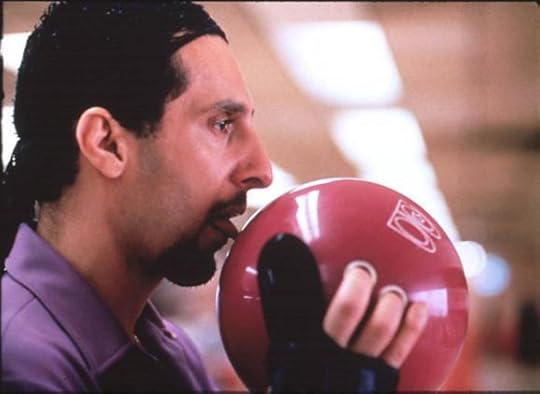
The balls are a dead giveaway.
And good god, the camping scenes. This is half the fucking movie, and it’s basically just people wandering around. The heroes stumble across Quantrill’s gold when Becky goes off into the woods to relieve herself and nearly pees on a skeleton and the next clue comes when Rip (or maybe Slash) accidentally runs into a tree and kills himself. There’s a lot of talk about this Hunter’s Lodge too, and Chris mentions that it has a shower, so you know what’s going to happen. It’s like Drew Sidaris needs nudity at all times, but can’t think of another scenario in which it might happen.
Then there’s this bizarre interlude where Jewell Panther dresses up like a Heavy Metal cover and does some sword poses around a campfire. The best part is Santiago watches with this “…the fuck?” look on his face. Yeah, dude, I don’t know either.
Rip and Slash attack the cabin (in defiance of their orders) and are killed. The heroes find the gold only to be captured by Santiago and Panther. Ava shows up to help, but she ends up going with Dickson, and she just gets captured too. There’s a shootout, and somehow the heroes wind up winning. Santiago and Panther try to escape in a helicopter, but anyone who’s ever watched this series knows that helicopters are fucking death traps. Sure enough, Ava shoots it with an exploding arrow, killing both bad guys.
Yakmala? This is the worst of the series thus far. While many of the others have long periods of inactivity, this one takes it to the next level. This movie makes boobs boring. While that technically marks a failure of intent, since it also fails to be entertaining, I’ll say no.
Filed under: Projected Pixels and Emulsion Tagged: Andy Sidaris, Enemy Gold, G-Strings, Girls, guns, Julie Strain

May 2, 2014
Yakmala: A Nightmare on Elm Street 2: Freddy’s Revenge
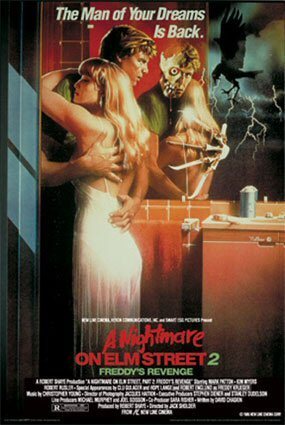
“The man of your dreams is back,” and they’re referring to the protagonist here. The dude.
I’m not the kind of guy who uses “gay” as a pejorative. I am the kind of guy who uses “unintentionally gay” as one. The ‘80s were an extremely homophobic decade, which probably baffles people who weren’t there, because everyone seemed intent on dressing up cross-dressing aliens, cross-dressing prostitutes, and cross-dressing prostitutes that cater exclusively to cross-dressing aliens. It’s instructive to remember that the more homophobic someone is, the more gay they are, and apparently that metric works for decades too. This week’s Yakmala film, A Nightmare on Elm Street 2: Freddy’s Revenge is like the entire ‘80s trying to come to terms with that one time it got a boner in gym class.
Tagline: Someone is coming back to Elm Street!
More Accurate Tagline: Someone is coming on Elm Street’s back!
Guilty Party: This is an interesting case. The homoerotic subtext of the movie (so blatant that it’s arguably just text) is obvious enough that those involved have come out of the woodwork to say that, yep, they were totally in on it the whole time. Writer David Chaskin claims that he sneaked gay themes into the script, but that smacks of Wiseauian retconning of an unchained id. Lead actor Mark Patton is gay, but was in the closet at the time, and has acknowledged that his mental state helped add to his convincing performance of a young man struggling with his sexuality. Robert Englund has just come right out and said that Freddy in this film represents the kid’s homosexual urges. The only one who has gone on record saying the gay stuff was unintentional is director Jack Sholder. Mr. Sholder, I respect your honesty. And for that, I’m blaming you.
Synopsis: Jesse Walsh (Patton) is a high school kid whose family has just moved into a big new home on suburban Elm Street in the (now) hilariously-named town of Springwood. Problem is, he’s suffering from horrible nightmares that cause him to wake up covered in sweat with a high-pitched scream. Well, that and his house is always around a hundred degrees. Seriously, the heat in the house is a plot point. Just in case you were worried about the Walsh family’s energy costs.
He has a girl who is seriously into him: Lisa, who sort of looks like a young, redheaded Meryl Streep, and has become the best illustration of the phenomenon of “‘80s hot” that I can think of. It’s never mentioned how these two know each other (Jesse just moved in, remember), or what Lisa sees in him. He seems to like Lisa as a friend, but is pretty uncomfortable with anything else. Every morning Jesse drives him and Lisa to the same school in the Valley where Daniel LaRusso would tangle with the Cobra Kai.
At gym class, Jesse has a run in with handsome Grady (Robert Rusler, most famous as the non-Robert Downey Jr. bully from Weird Science). Grady pantses Jesse, and then they wrestle a little bit with Jesse’s bare ass hanging out, and holy shit, how did Sholder not catch this? The coach gets mad and forces them to do pushups, which prompts Grady to reveal that the coach “gets his rocks off like this” and “hangs out in S&M joints downtown.” Yeah, this is totally necessary in a Freddy movie.
That night, Freddy appears to Jesse. It’s unclear if this is supposed to be a dream, or a night terror or what. Anyway, Freddy really wants to borrow Jesse’s body to commit a couple murders. Jesse is not down with this. It keeps happening, though. No matter how much Jesse refuses to kill, the more insistent Freddy gets.
What Jesse is down with? ‘80s dancing. When his dad orders him to unpack his room, Jesse puts on a Pointer Sisters knockoff, dons some Elton John shades and starts dancing. Sexually. Lot of ass-popping here too, and highlighting his cock. It’s… um… I don’t even know. I’m sure they just told the actor to dance, and he started doing this, but there was a perfectly acceptable ‘80s dance. Everyone was doing it. You bite your lower lip, you swing your arms in wide arcs, snap your fingers roughly to the beat, shrug shoulders, and sway. You don’t look like you’re working for tips at Big Jim’s House of Moose Knuckle. Anyway, mom brings Lisa into the room, catching Jesse at the apex of his sexually-charged performance. Lisa is cool with it, and helps him unpack.
They end up finding Nancy’s diary in the closet. You remember her, she’s the heroine of the original movie. This is her old place. Lisa borrows it for research (although she probably wanted to get it away from Jesse, since the whole thing opens with a description of Johnny Depp’s character undressing). Jesse’s got more important stuff to do, like getting himself in a fugue state and murdering the gym coach. Jesse’s pretty sure he did it, since he remembers it, but Lisa dismisses it as mere psychic powers. Was… was that a normal problem back then?

Yep, looks like you got yourself a Dead Zone situation here. Luckily Blue Cross covers those.
Good news, though! Lisa’s having a party. Grady can’t go due to being grounded — he threw his grandma down a flight of stairs (!) — but everyone else will be there. Lisa and Jesse hook up in the cabana, and Jesse promptly freaks out, fleeing to Grady’s house. He leaps on top of Grady, who is in bed, clamps a hand over Grady’s mouth, and demands that Grady watch him sleep and stop him should Jesse do something. I’m trying to figure out a way to make that scene any gayer, and the only thing would involve penetration. Jesse mentions that “someone is trying to get inside my body.” Grady responds with, “Yeah, and she’s female,” leading me to believe Grady doesn’t understand how sex works. Anyway, Freddy comes out of Jesse and brutally murders Grady.
Jesse, covered in Grady’s blood somehow gets past Grady’s parents (who were just outside the room, pounding on the door, when the murder took place) and back to Lisa’s party. There Freddy comes out completely, kills some people, and leaves. Lisa tracks him to the powerplant where he used to work (established earlier) and defeats him by getting Jesse to come back out. They kiss. The end.
Well, no. There’s a bus dream like in the beginning, and it’s kind of weird, but who cares. The movie is barely canon anyway.
Life-Changing Subtext: Homosexuality will drive you to horrific acts, so your best bet is repressing that shit and hooking up with someone of the opposite sex.
Defining Quote: Jesse: “Fred Krueger! He’s inside me and wants to take me again!”
Standout Performance: That would have to Mark Patton, who beat out Brad Pitt, John Stamos, and Christian Slater for the lead role of Jesse. From the palpable discomfort he has with making out with the ‘80s hot Lisa to the way his gaze lingers on Grady, everything he does reinforces the film’s pervasive subtext.
What’s Wrong: The concept for the movie is actually really good. There’s a lot of horror in the concept of something forcing you to do things you secretly want to do but can’t due to social mores. Had the subtext been intentional, and had the “happy ending” not been Jesse ending up with a girl, I might be writing this up for Now Fear This. Okay, maybe not, because the movie is still pretty scare-free.
Flash of Competence: Robert Englund’s Freddy has not yet devolved into toothless schtick and he’s pretty fun to watch here. The FX are also pretty great, especially the two Rottweilers in the end with the human faces. I felt bad for the puppies, but it’s a cool effect.
Best Scenes: I thought that I would talk about some of the more blatant moments here. I already brought up the bare-assed wrestling and when Jesse passed up sex with Lisa in favor of shirtless bedroom time with Grady. Let’s get deeper. Balls deep.
The heat in the house eventually turns into fire-related haunting. The oddest has to be when the parakeet escapes his cage, flies around attacking the family before exploding in to flames. The best is that Jesse’s dad is totally convinced Jesse somehow did this. On the list of suspects: cherry bombs, bird rabies, and cheap bird seed. No, really.
The scene I need to talk about, the one that raised my eyebrow even when I saw this as a kid, has to be the events leading to the gym coach’s murder. Jesse can’t sleep and so wanders the city. He doesn’t bother to button his shirt up, though. Anyway, he winds up at an S&M bar, and who’s there, but Coach Schneider. Coach then takes Jesse back to the school and makes him run laps and then shower, because Megan’s Law wasn’t a thing yet.
As the coach prepares to rape Jesse, suddenly the athletic equipment comes to life. First, Coach Scheider gets pelted with balls (yep), then he’s dragged into the shower with jumpropes, tied up, stripped naked, and whipped on the ass with a towel. I don’t know how this scene got greenlit. I really don’t.
Transcendent Moment: The most baffling moments in the film are little ones. It’s not the broad strokes that the writer clearly put in, or the elements of Patton’s conflicted performance, or the ‘80s just being a sexually confused time. It’s the weird shit that couldn’t possibly have been intentional. The stuff that’s just thrown in there.
So I’m not talking about the tons of unnecessary locker room scenes, or that Jesse freaks out in class when Grady puts a snake on him, or the fact that Freddy only kills boys until the last thirty seconds. It’s not the fact that after killing Grady, the boy he loves, Jesse stops and has a conversation with Freddy in the closet mirror.
No, it’s two little things that makes me think that somehow, a gay leprechaun got onto the set. The first is, during a school lecture that could be about anything — you know, like something relevant to the plot — but instead is about digestion. And behind the teacher is a drawing of an anus. The other is the only game visible in Jesse’s closet, right there perfectly framed. Something called “Probe.”
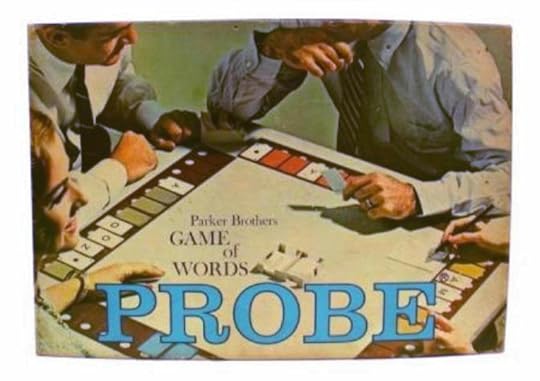
There has to be a game about investigating the ass. There just has to.
A Nightmare on Elm Street is a legitimate horror classic. Its sequel is a profound oddity that could not have been made at any other time. Enjoy it for what it is: a time capsule into a more repressed era, and be grateful, gay, straight, or anything in between, that you don’t have to live there.
Filed under: Projected Pixels and Emulsion, Yakmala! Tagged: A Nightmare on Elm Street 2: Freddy's Revenge, Freddy Krueger, homoerotic, hoo boy, someone call Freud, subtext, Yakmala!

April 28, 2014
GET BLANK kickstarter going strong!
https://www.kickstarter.com/projects/...
April 25, 2014
How To Get Published
Lately, a lot of people have been asking me how to get published. To my horror, I realized I actually have some practical knowledge in that arena. If you’ve managed to just stumble across this blog and have no earthly idea who I am, my name is Justin Robinson, and as of this writing have published seven novels with two more due out this year. This is by no means a complete guide, just what I’ve observed in my short career thus far. And probably a few dick jokes, because this is me we’re talking about.
There are three paths to publication, and I have varying degrees of experience with all of them. The first is the traditional path, where you get an agent who then tries to sell your book to publishers. Many people will tell you this is the Right Way because for many years it was the only way, apart from the few brave and possibly insane people who published their own stuff. I have had extremely negative experiences with this method of publication. Extremely. Here’s the thing they don’t want you to know: agents do not care about you. Seriously, they do not give one tiny fuck. They’ll say as much on their websites, but it’s couched in polite language. Agents only want sure things, books they know they can sell. While they claim it’s all about quality and they do it for the love of literature, it’s important to remember that Donald Trump, E.L. James, and half the cast of Jersey Shore all have literary agents.
The negative experience I alluded to was not in the raft of rejections I received. That’s a completely normal, expected part of the business. Check out how many times Harry Potter was shot down before someone realized it was a magic money press. The worst is when agents are kind of interested. They request more, and right when I had given up hoping I’d ever hear anything back from the latest shipment, they’d send me another request for even more stuff. This took months and months (and postage charges for those Stone-Agents who insist on paper manuscripts), and I would get close — often after an agent held my book hostage for almost a year — before she would tell me that her boss wasn’t interested. And just like that, the dream was over. Basically, it was a colossal waste of my time.
The crazy thing is that agents are, at best, a luxury you don’t need. I know writers who have agents who are getting published in the same places I am, essentially paying 10% to a person for doing something they could quite easily do themselves. I know other writers whose agents are sitting on multiple manuscripts, not even sending them out to publishers. The important thing to remember about agents is this: you are their third priority or lower. An agent’s first priority will always be themselves, followed by their agency. Next on the list would be their biggest names, and if you’re just starting out, that’s not you. There’s always the chance the agent can get you into one of the big houses (they’re still the only ones who can — for now), but if your book flops from there, it becomes that much harder to do again.
On the other end of the spectrum, you have self-publishing. While it’s slowly losing the stigma that it’s carried forever, it still has some undeserved stink on it. No other medium has this, and prose is slowly catching up. When a comic is self-published, it’s a triumph of the little guy. When an album is recorded in a home studio, ditto. When a film is self-financed, it’s fucking Avatar. Only self-published novels are viewed with suspicion, albeit there is some reason. With tools like Createspace, self-publishing has become easier than ever before, and when you remove that barrier, you’ve opened the floodgates. This has caused some truly terrible stuff to get out there, but it’s also allowed untraditional stories to find an audience and removed middle-men from the equation. The problem is that, unless your self-published book is a runaway success (which is, to put it mildly, such a long shot that it’s akin to taking a bath in radiation in the hopes you’ll get superpowers), it’s not something that will help you get published elsewhere. Agencies and publishers alike don’t consider self-published books to count when it comes to listing publication, something you have to do whenever sending a submission off.
I have self-published one book so far, Coldheart, and I learned that while it’s easy to self-publish, it’s hard to self-publish well. I do not recommend self-publishing your first time out. After you have some experience, you’ll better be able to craft a work that can stand without the intense editorial oversight you get from publishers. Or, you could hire an editor, if you have that kind of cash. The one thing that should be non-negotiable is to hire a professional to design your cover. They’re easy to find, and you can get fantastic work done for a little over a hundred bucks. The inside shouldn’t be neglected, as a lot of work goes into making sure a book is easy to read. It’s the kind of work that, if done well you never notice. Layout is difficult in ways you’ve probably never considered: both margin size and kerning can be of vital importance.

Kids Exchange vs. Kid Sex Change. The importance of kerning, ladies and gentlemen.
The last path to publication is also my favorite: small press. You get editing, cover design, layout, and maybe some other stuff (more on that later). The best part is that small presses don’t require agents to submit to them, once again removing a parasite from the process. Small presses come in two basic varieties, mills and boutiques. In reality it’s more of a scale, mills on one end and boutiques on the other, with the vast majority of presses falling somewhere in between. (A third variety, vanity presses, are basically just self-publishing and should be avoided — why pay someone else for something you can do yourself?) Mills are the bigger presses, tend to acquire tons and tons of titles, devote minimal time to editing and layout, have uninspired covers (with real photos for some reason), and do nothing to promote their titles. They make money with volume: one of their books will hit out of a hundred (I just made that statistic up), and they ride that title. Mills also tend to have large, built-in audiences, a website that’s relatively well known, and a good royalty rate on ebooks (which will be the bulk of your sales). I’ve published two books with companies I would consider to be mills, and one does quite well — the other not so much. Mills are great for writers that are comfortable and skilled at promoting themselves; for anyone else, they’re a crapshoot.
Boutiques are the opposite. They’re very small and they want to put the best possible product out. They tend to have much more inspired cover design, either in house or farmed out, and their layout and editing is top notch. They usually do more promotion, though this varies. The downside is they have less of a reach than mills, and they tend to offer worse rates. I prefer presses on the boutique end of the scale simply because I like the personal attention, the finished product, and the help on the marketing end. The main problem is they’re much more unstable. Profit margins are razor thin, and almost every day some press makes a misstep from which they can’t recover, and falls apart.
Okay, the basics are out of the way. You have a finished manuscript. What’s the plan here?
If you’re going either the traditional or small press route (again, I recommend the latter), your first step is a query. This is an awkward letter in which you describe your book to someone you’ve never met in the hopes they will want it. The format is going to seem bizarre and stilted, but remember, you’re writing it for people who get a ton of these. They love it when people get to the point. Open with a salutation and always address it to a specific person. Agencies and publishers HATE “To Whom It May Concern.” Take the time, browse the website, and pick the person who seems most likely to respond well. With small presses, you’re generally writing either to the head of the press or the acquisitions editor. With agencies, it’s a specific agent, and if they don’t like it, they’ll just throw the query in the trash… even if there’s another agent down the hall who will love it. Seriously, agents are dicks.

Did they even read the guidelines? I said specifically all manuscripts should be soaked in orphan tears.
There are tons of great query-writing tutorials online. While the best query will always be whatever the agency/publisher asks for on their submissions guidelines (ALWAYS READ THE GUIDELINES), the following format is fairly universal and has served me well: Your first paragraph is a tagline — that’s your novel distilled into one punchy sentence. For example, here’s the one for The Dollmaker: “A troubled genius creates living women out of wood, porcelain and plastic, but with the birth of each one, he loses more of his soul.” Your second paragraph is your synopsis. That’s the book in a paragraph. Third paragraph is your resume, basically. If you’ve published other stuff, that goes here. If you wrote a book about lawyers and you’re a lawyer, that goes here. That kind of thing. It’s pretty easy. Last paragraph is a simple summary: “[TITLE] is a XXX,XXX word [GENRE] novel.” Sincerely, you. Bam. Done.
To pick a place to query, go to Preditors and Editors and browse their listings. Yes, I know the site looks like it should be on Angelfire in 1998, but it’s a great resource. Make sure whoever it is takes unsolicited queries, and go nuts. P&E does a reader poll every year, and this is a good tool to use when selecting a small press. Mills tend to win the top spot (as a poll is basically a popularity contest, and they have tons of writers to stuff the ballot boxes), but boutiques can and do make it on there as well. I like to go through the most recent year’s listings, top to bottom, and check out the website of each one. If the site looks cool and professional, that’s a big point in their favor. After all, if you like it, readers probably will too. Covers are also important to me. They say not to judge a book by its cover, but that’s what the cover is for. Query the places that have the kinds of covers that would intrigue you as a prospective buyer.
A small press should offer 50% as a baseline for ebook royalties. For this, you’re getting editing, layout, a cover, and presence on their site. That’s it. If a site has good covers or better editing, I’ll take a hit in the royalties. If a press ruthlessly promotes their writers, I’ll happily let that reflect in the royalty rates. Think of any other services the press provides as being paid for by those percentages, but 20% on ebook royalties is absolutely as low as you should ever go. There’s just too many other options that’ll pay that or more.
If you’re still not sure on who to pick, seek out some of your favorite small press authors and check who they publish with. If you see someone returning to the same press, as I’ve done with Candlemark & Gleam and Books of the Dead, that’s a pretty ringing endorsement.
I hope this answers most of the burning questions you have about the road to publication. If it seems intimidating, don’t worry, it is. But that’s only because writers have so many options. It truly has become a buyer’s market for us now, and we’d be foolish not to take advantage.
Filed under: Nerd Alert, Puffery Tagged: agents, how to get published, publishing, self-publishing, Small Press

April 17, 2014
Lifetime Theater: The Bad Son
Lifetime movies have an admirable economy of action. The twin constraints of budget and time force them into a predetermined box and yet, most of the movies I have profiled managed to pack in at least one subplot alongside the main one. Sadly, the budgetary concerns make that a pretty static box, since there’s no money for a big shootout, or a car chase, or a dinosaur, or even a dinner out at like an Olive Garden or something. There’s enough money for people having some intense conversations about family in the same three or four sets, and maybe some transition shots of the rainy streets of Vancouver. And that’s it.
On the subject of those conversations, family is the one universal theme in the Lifetime movies I’ve profiled thus far, and before anyone reads too much into that, this is only my seventh, and family is a pretty big theme in fiction at large. Just think of how many movies place a premium on their ragtag group of heroes creating a makeshift family. What is more remarkable about Lifetime movies, is that (in my limited experience) tend to be about the destruction of family rather than the creation of one. Today’s movie is 2007’s The Bad Son, and it once again plumbs the depths of the mom fears for which this network is infamous.
The movie just starts (there’s that economy) at a grainy crime scene “six years ago.” The shorthand director Neill Fearnley (every TV movie known to man) uses for flashbacks is a persistent grain, like he hired Abraham Zapruder to shoot this thing. The problem is that Vancouver (doubling here for Seattle, which is the least offensive place Vancouver can double for) is so rainy, it introduces a little bit of grain into scenes that aren’t supposed to have it. During one point, I thought the slight grain meant that the action took place a couple of hours in the past. Anyway, this crime scene is pretty horrific: a pretty young woman has been beaten, strangled, and her face was burned off with acid. Sadly, they didn’t get the excellent gore FX from Lizzie Borden, as we see the young woman, and she totally has a face.
Then it’s the present, and we introduce our heroine Ronnie McAdams, played by Catherine Dent of The Shield. She’s a freshly divorced single mom whose sixteen year old daughter just wants to move the fuck out. The age of consent in Washington State is sixteen — and you can thank Twilight for me knowing that — but does that mean it’s also the age of majority? Can’t Ronnie be like, “no, you can’t move in with your boyfriend Trey.” Also, she has a boyfriend Trey. This is the b-plot that’s meant to contrast with the main one: Ronnie’s family is falling apart in the beginning (due to, in a tossed off bit of dialogue that is the most Lifetimey thing ever, her man leaving her for a 24 year old bartender) but through perseverance and good sense, she can put it back together again. The girl has to get in trouble with the law first, but in the end, everything’s good.
Ronnie is a detective, and when she catches a disappearance, she gets drawn into a six year old murder case. The disappeared girl, Colleen Brennan was the wife of John Finn (Ben Cotton, best known to me as Pastor Mike on The Killing), and he was the prime suspect in two other murders. Finn loses more wives in the exact same way: beaten, strangled, burned with acid. They’re all the same type too, small-boned attractive redheads. And here’s the thing, Finn, redheads are a precious natural resource. I’ll thank you not to just go murdering them. Anyway, this seems like a pretty open-and-shut case. I mean, you can get away with murdering one wife, but three seems like it’s pushing it. The answer lies with Finn’s mom.
Frances Reynolds (Finn’s mom — her name comes from her second husband) is an old battle-axe who works as a civilian employee as the Supervisor for Central Communications for the Seattle PD. She knows police methods, and more importantly, she can bury damaging communiques. She’s been crushing the detective assigned to the case under harassment complaints and constantly feeds him and anyone else a series of false leads. When Ronnie catches the disappearing girl case, the department pairs her up with Mark “Rico” Petrocelli, this detective, to finally bring Finn down. There’s the obligatory “I don’t work with partners” scene that not even the actors seem engaged with.
The amazing thing about this movie is that there’s no twist. Not a one. What we think is happening in the beginning is exactly what turns out to be happening in the end. Finn falls in love with a young woman — a little too young, but that’s those Cullen-friendly laws for you — gets frustrated with her, and in a fit of rage, murders her. Then his mom sweeps in with the disposal and stymies the investigation. Boom. That’s it. And it takes the movie 88 minutes to get there. Ronnie and Rico just follow Finn around, worried that he’s repeating the cycle with yet another pretty young redhead and hope they can save this one’s life. They finally get him on the murders when they flip his uncle Jerry.
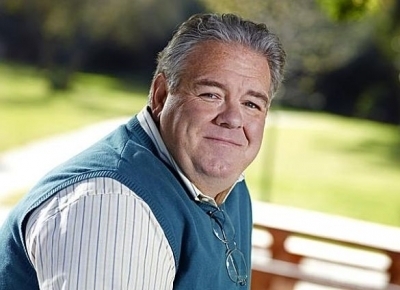
GODDAMN IT, JERRY.
And that’s what this movie is really about. On the outside, you have the stereotypical thing that a hypothetical Lifetime viewer might want: a doting son extremely close to his strong-willed mother. But on the inside, there’s serious rot. Their relationship, even without the murder and corpse-mutilation, is portrayed as creepy. It’s not as creepy as it maybe should have been, but the delivery of certain lines (“No one will ever love you like I do”) hints at some Oedipal undertones. Uncle Jerry is relentlessly abused both by mom and Finn, and he’s the crack that allows the police to get in. It’s the contrast illuminated by Ronnie’s own problem, an inverted arc of families. That’s not to say it was good or especially interesting, but it was there.
After the much-grittier Playdate, Lizzie Borden, and An Amish Murder, The Bad Son was very dry and inert. I’m wondering if this was because it was five years earlier, and the network has since warmed up to gore. The movie was in desperate need of some kind of twist — making Jerry the killer would have been good for starters — to break up the monotony of two cops going after the obviously guilty man from the beginning. Oh well. It’s a Lifetime movie. I should really expect less.
Filed under: Projected Pixels and Emulsion Tagged: Ben Cotton, Catherine Dent, creepy families, Lifetime Theater, The Bad Son




